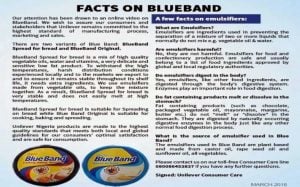It’s estimated that over 10 million of the Kenyan population suffer from poor nutrition and chronic food insecurity. One of the measures put in place to address this issue is consumer awareness campaigns run through public and private sector partnerships to inform consumers on suitable food choices in the market. Of these campaigns, the food fortification campaign is arguably the most recognizable.
This campaign has or had been running through various media platforms and it aimed to sensitize the public on how to identify food commodities in the market that are fortified with vital micronutrients (vitamin and minerals).
The target foods for this campaign are staples in the country and include the likes of maize meal, wheat flour, sugar, salt and vegetable oil. This has been achieved through the adoption of national food fortification logo back in 2012 called kuboresha afya (improving health), which was launched by the Kenya National Food Fortification Alliance (KNFFA), a public-private partnership.
This logo makes it easy for consumers to identify foods in the market that are fortified. Of course this logo would be pointless if there wasn’t a law behind it and for that reason, there is a legislation that requires mandatory fortification of maize meal, wheat flour and vegetable oils in Kenya.
This is however limited to packed food products that are in retail meaning similar food products found in the informal markets may not be fortified.
What is Food Fortification and why it’s important?
 |
The Food Fortification Logo by KNFFA |
Food fortification is the practice of adding to food one or more essential vitamin and/or minerals in order to improve its nutrition content.
Food fortification is very important since some of the food we consume may lack one or more mineral that are vital for the body or some of these nutrients may have been lost during harvesting or post-harvesting, particularly during processing.
Also, some foods that are grown in regions where the soils have low quantities of certain minerals tend to be low in such minerals.
The main reason why food is fortified is to reduce the prevalence of vitamin and mineral deficiencies in the country, which in particular affects children and mothers. WHO reports that the main deficiencies in the world include zinc, iodine, iron and Vitamin A.
Back in 2012, the then Minister of Health, Beth Mugo, reported that the deficiency of these vitamins and minerals continue to be a major challenge to public health in Kenya, with 43% of women of child bearing age, 43% of children under five years old and 70% of the expectant mothers suffering from iron deficiency anaemia, the no.1 nutrient deficiency globally.1
What is being done?
The government under the Ministry of Health has advocated fortification of vegetable oil and sugar with vitamin A, flour and other cereals products with iron, zinc, vitamin B and folic acid and salt with iodine.
Since 2013, it was made mandatory for all food millers to fortify their products. The Kenya Bureau of Standards (KEBS) is tasked with ensuring that all the registered millers meet these objectives.
Other food that are being fortified apart from the aforementioned ones include: infant formulas, milk and its products, margarine and some beverages.
Challenges Facing Food Fortification in Kenya
It’s a fact that food fortification alone cannot sustainably combat the prevalence of micronutrient deficiencies and should therefore be used as part of other programmes to tackle this problem. Here’s why:
- Food fortification programmes are mainly feasible in packed food products which may not be accessible to all consumers, especially those in food insecure regions who tend to make the bulk of those vulnerable to nutrient deficiencies.
- Fortified food products tend to be a little bit expensive compared to the unfortified variety and this goes back to the previous point. This explains why some consumers prefer buying maize meal (unfortified) from the local mills (posho mills) or even milling their own maize grain to buying the one available in retail shops. To complicate matters, this also happens in urban areas where the fortified maize meal is readily accessible, meaning that cost may be a larger impediment to the adoption of fortified food products than consumer awareness.
- Food processing may cause the loss of certain nutrients which are not or cannot be replaced through fortification. While not exactly a nutrient, dietary fibre is a really good example of this.
- There is the risk of overdosing on some micronutrients due to food fortification and supplementation especially in young children. However, this is mostly an American problem.
At the end of it all, it should be noted that eating fortified foods shouldn’t be an excuse to NOT taking a balanced diet, rather fortified foods should be part of what constitutes a balanced diet.
REFERENCES
1.The Standard – Fortfied food now mandatory





